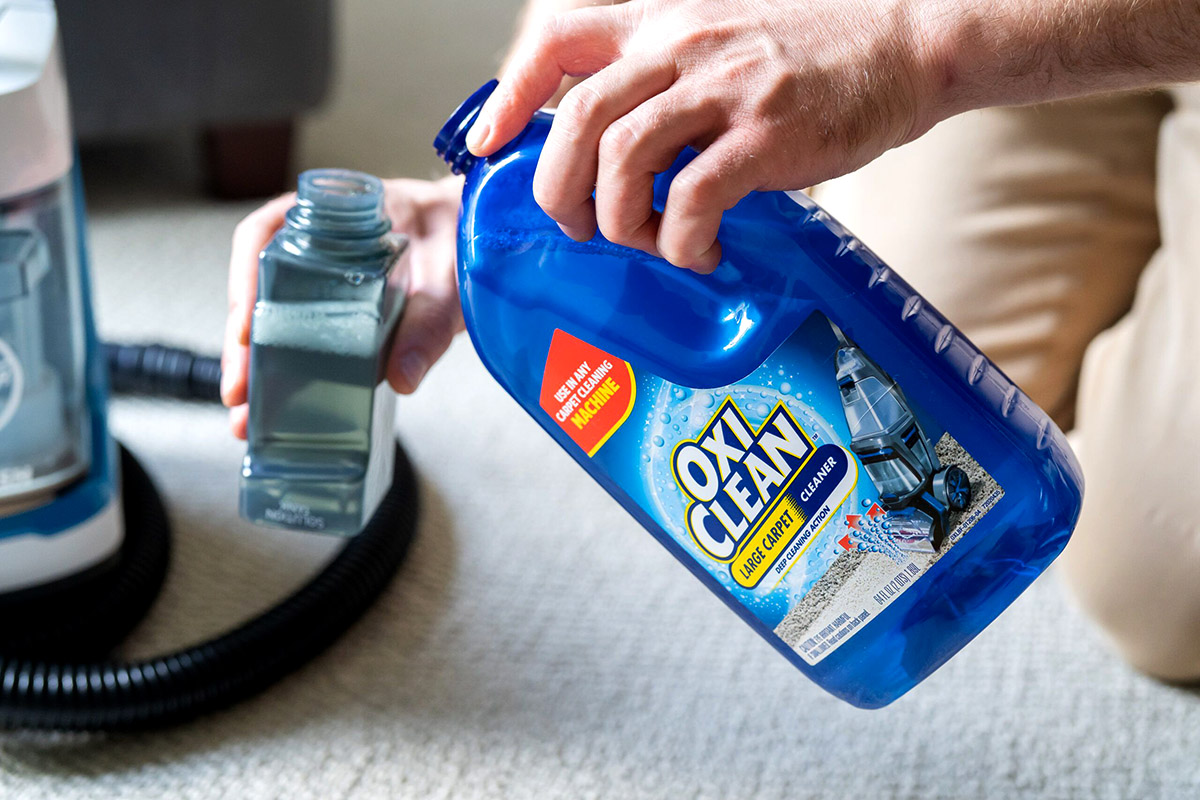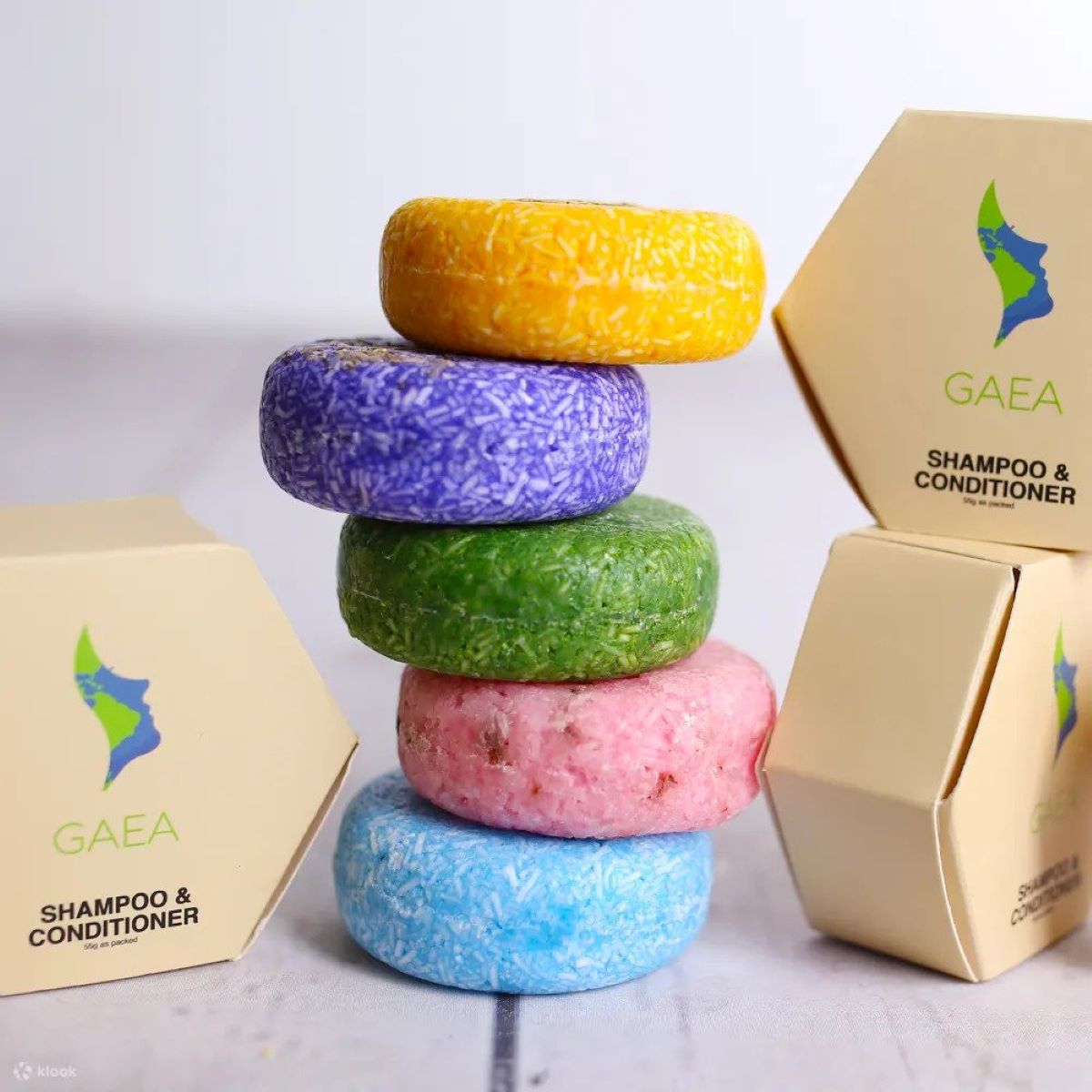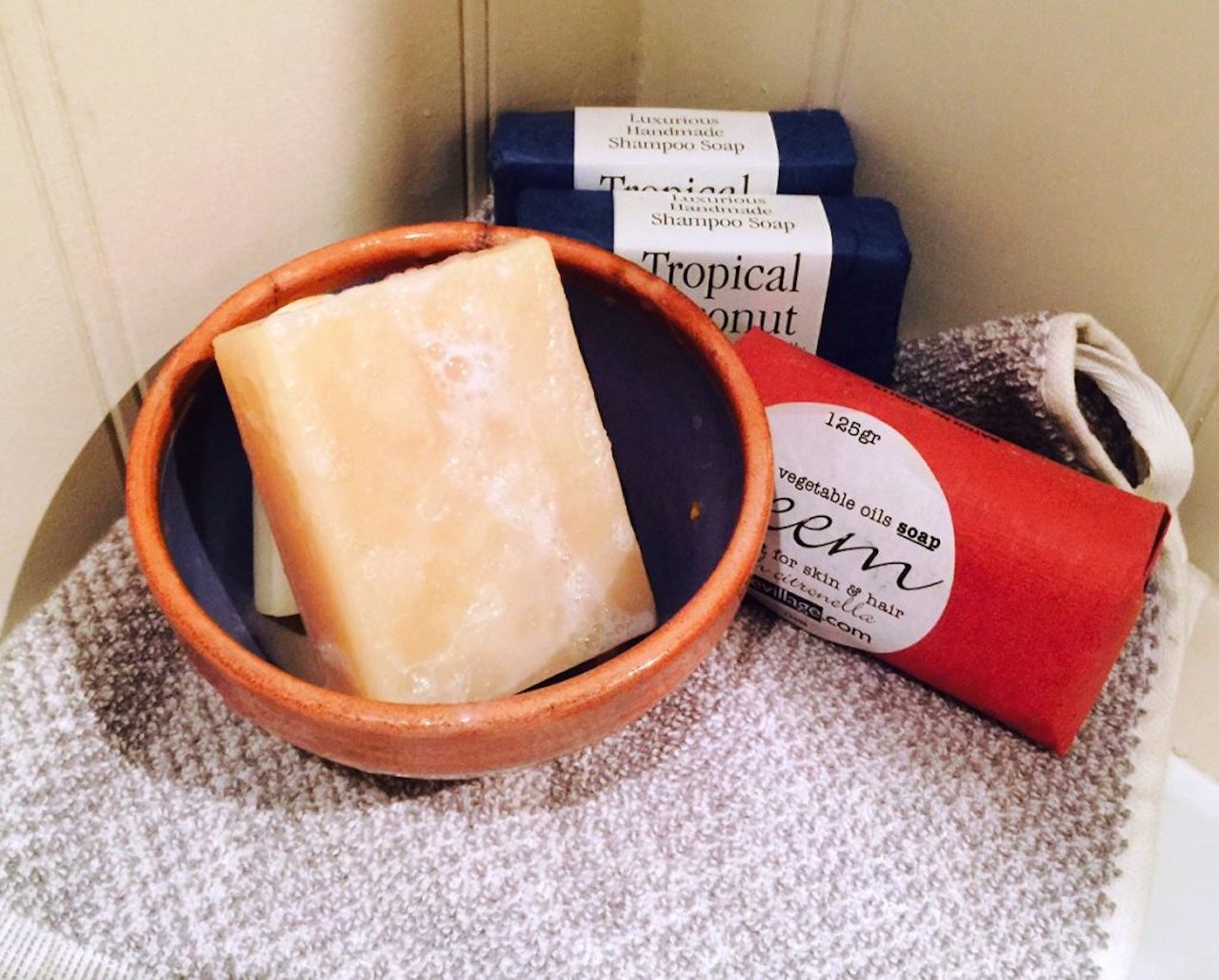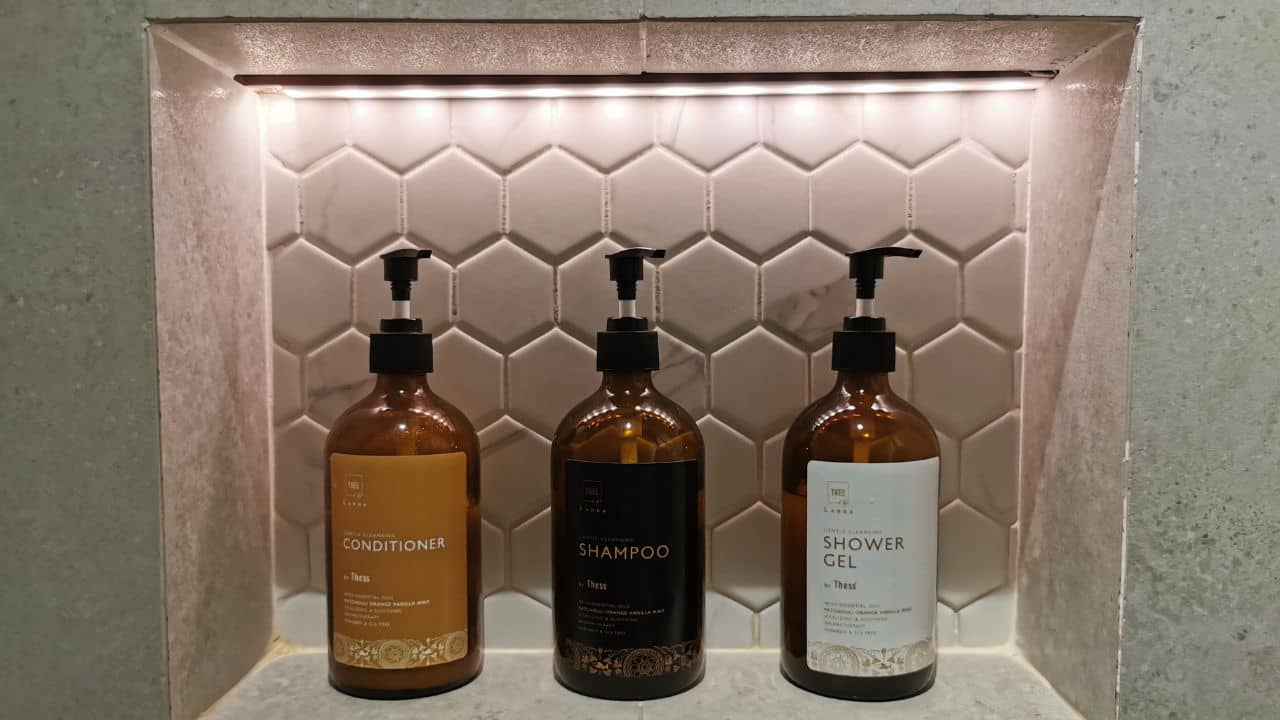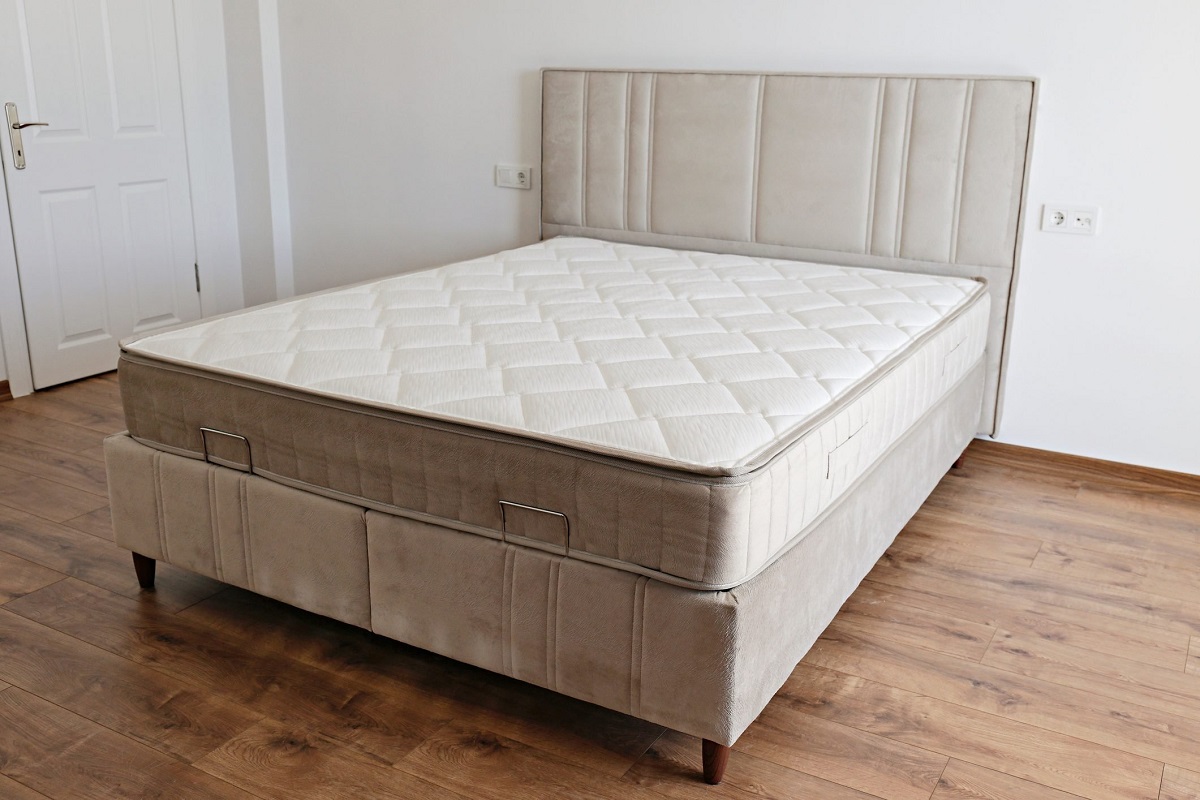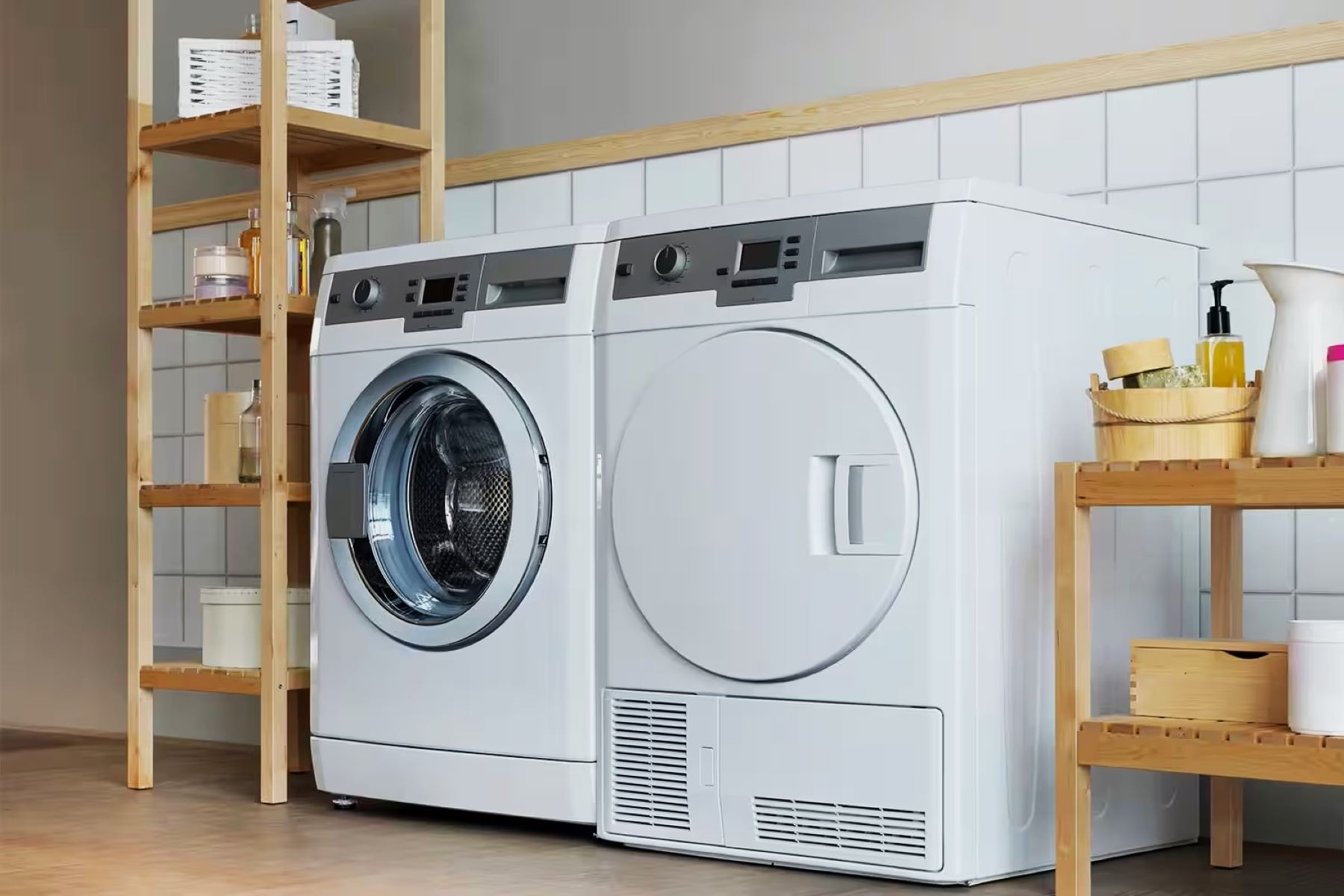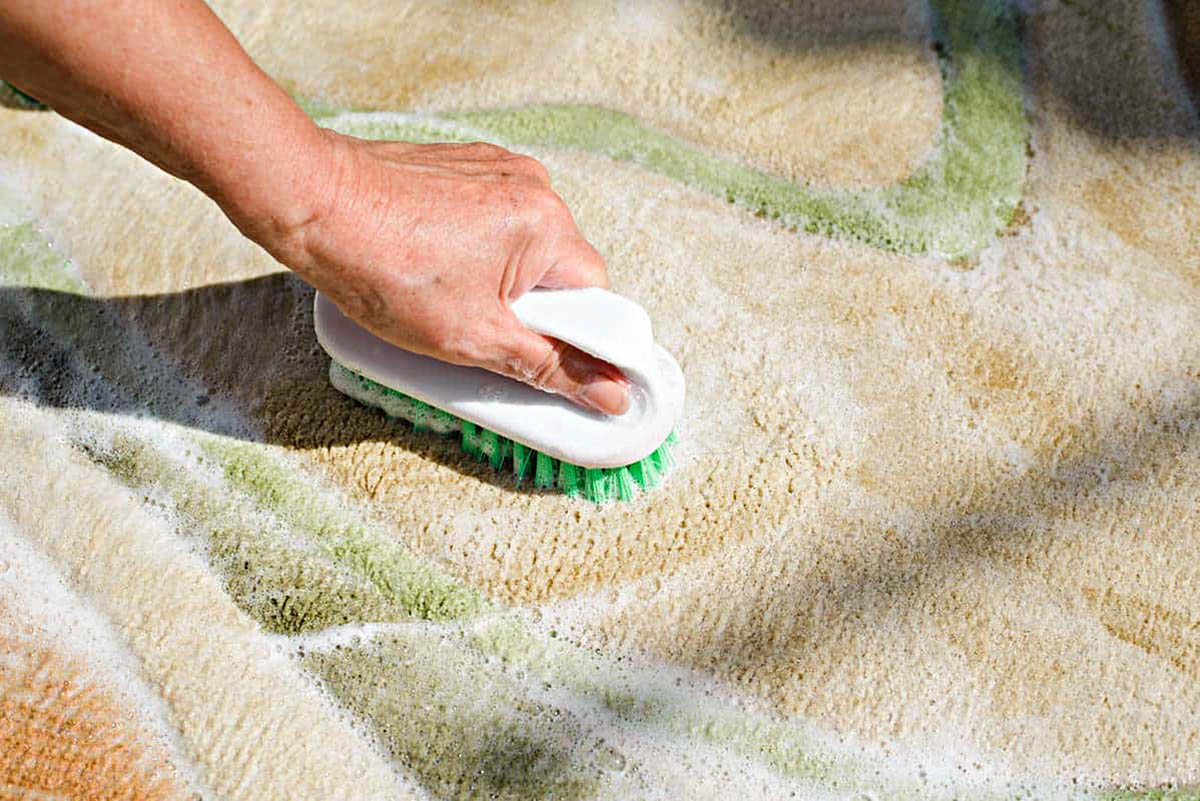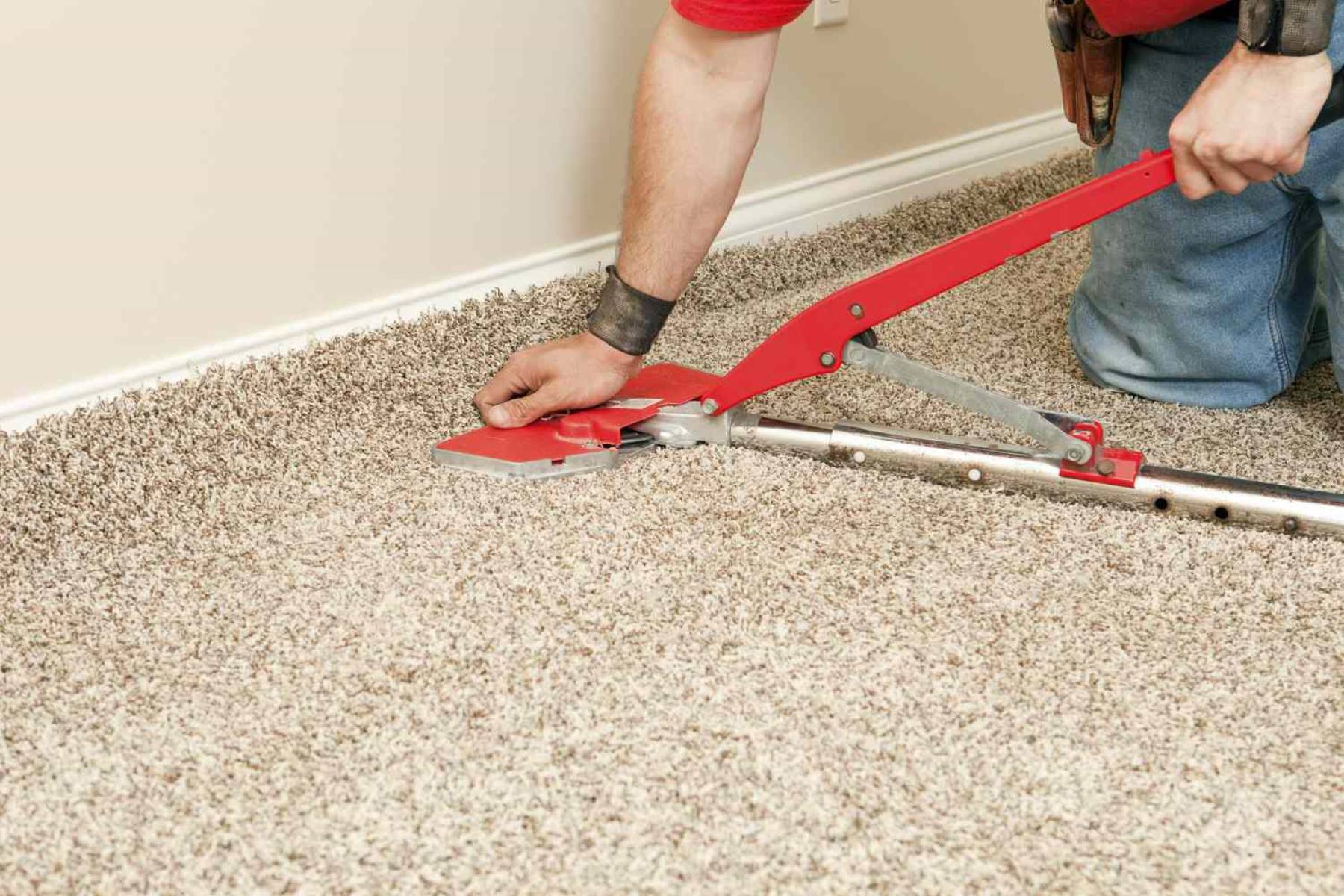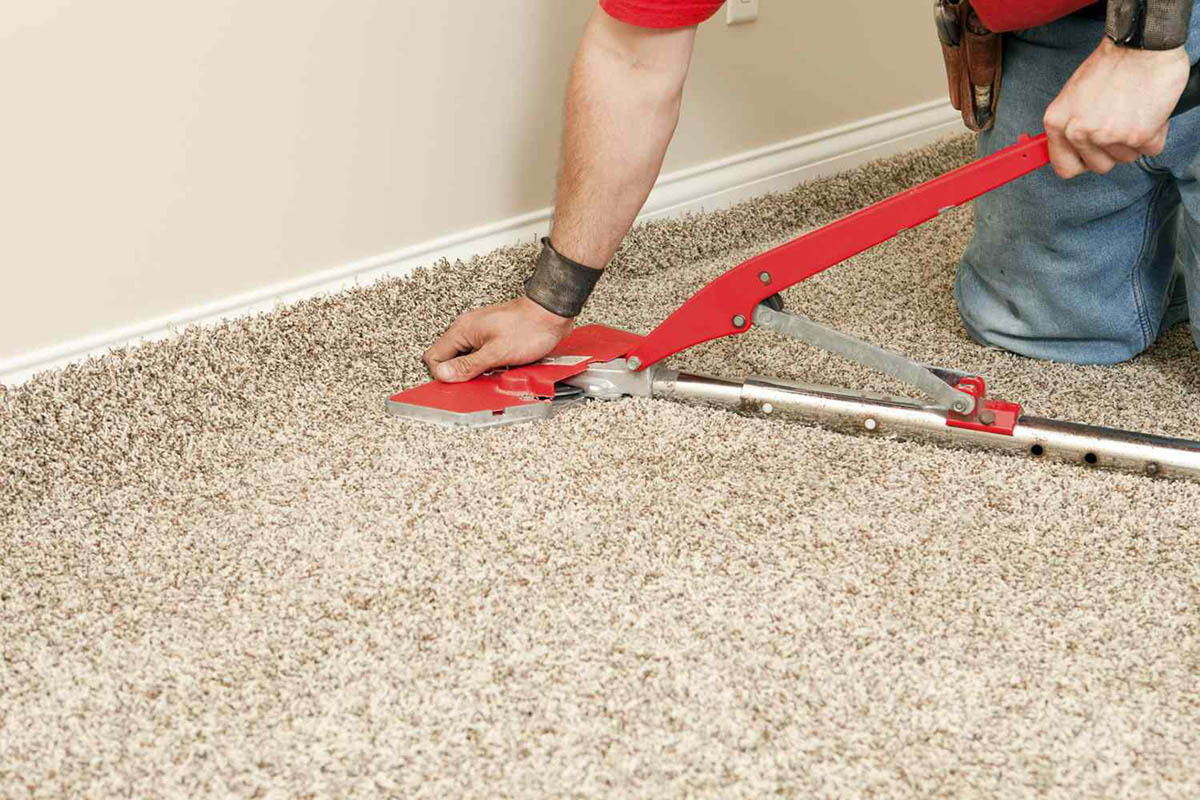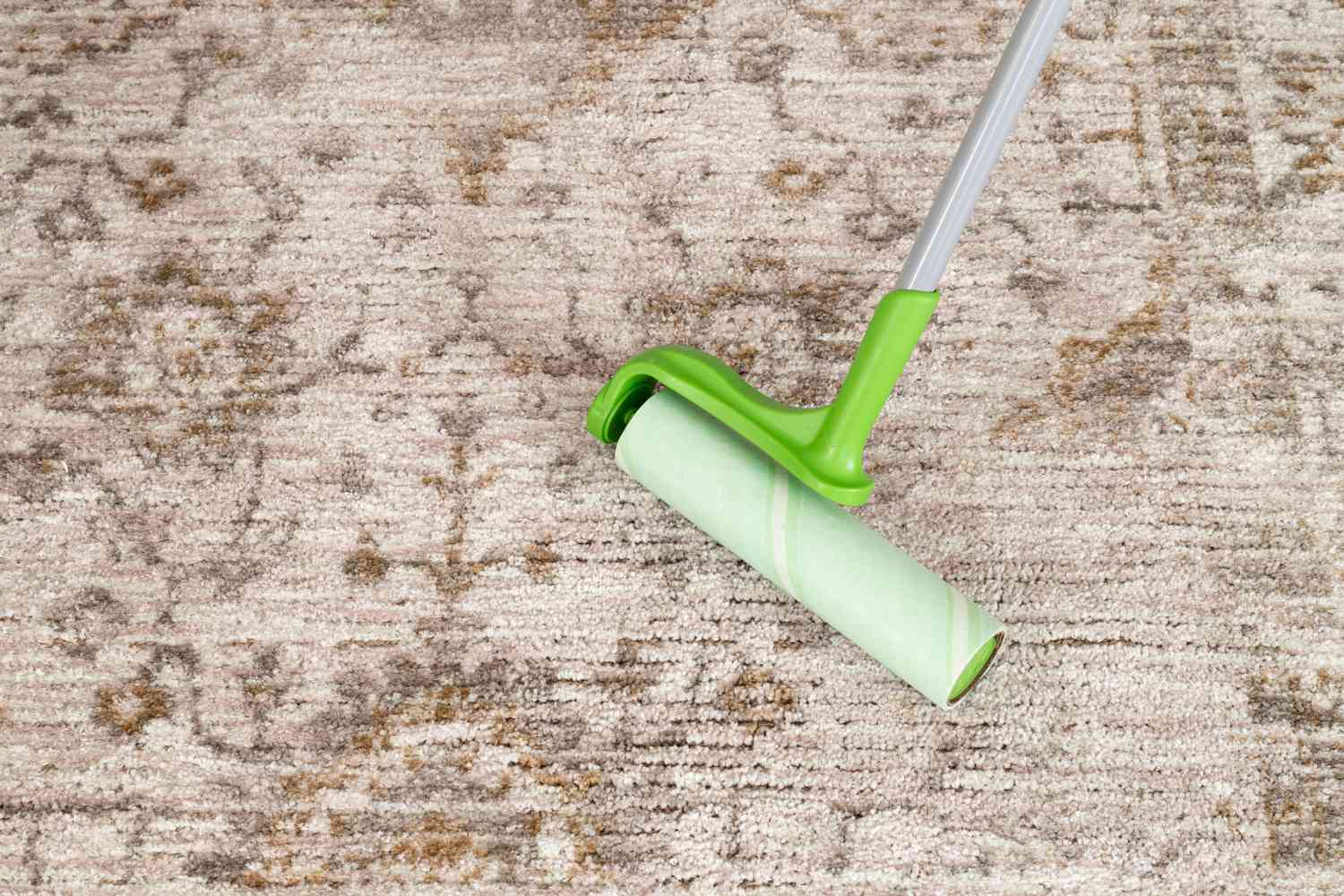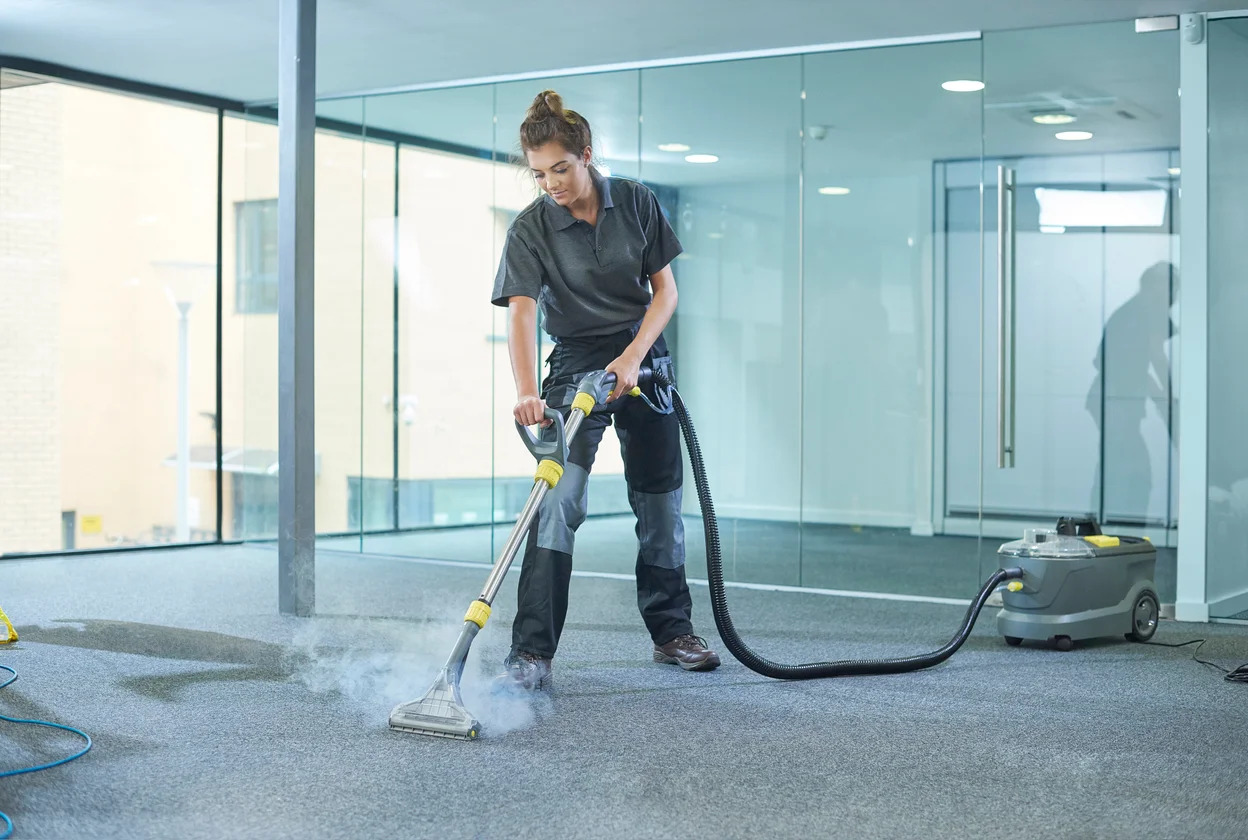

Articles
How To Shampoo A Carpet
Modified: January 9, 2024
Learn effective techniques and step-by-step instructions on how to shampoo a carpet with our informative articles. Expert tips and tricks for a cleaner and fresher home.
(Many of the links in this article redirect to a specific reviewed product. Your purchase of these products through affiliate links helps to generate commission for Storables.com, at no extra cost. Learn more)
Introduction
Welcome to our comprehensive guide on how to shampoo a carpet! Whether you’re dealing with a spill, stain, or just want to give your carpet a thorough cleaning, knowing the proper techniques and using the right products can make all the difference. Shampooing a carpet not only removes dirt and grime but also helps refresh its appearance and maintain its longevity.
In this article, we will walk you through the step-by-step process of shampooing a carpet, from preparing the carpet to drying and vacuuming. We will also provide valuable tips and insights to ensure that you achieve the best results and avoid any potential pitfalls.
So, if you’re ready to give your carpet a new lease on life, let’s dive in and discover how to properly shampoo your carpet!
Key Takeaways:
- Properly preparing the carpet, choosing the right shampoo, and diligently following the shampooing process can revitalize your carpet, remove dirt and stains, and maintain its longevity for a clean and fresh home environment.
- Testing a small area before applying the shampoo and effectively removing excess shampoo are crucial steps to ensure the safety and compatibility of the cleaning process, leading to a satisfying and revitalized carpet.
Read more: How To Shampoo A Carpet On Stairs
Preparing the Carpet
Before you begin the shampooing process, it’s important to properly prepare the carpet. This involves removing any loose items, such as small furniture, toys, or decorations, from the room. Clearing the area will make it easier to maneuver and shampoo the carpet efficiently.
Next, give the carpet a thorough vacuuming to remove any loose dirt and debris. Use a vacuum cleaner with a strong suction power and consider using attachments to reach into corners and along baseboards. Focus on high-traffic areas and pay attention to any visible stains or spills. By removing surface dirt and dust before shampooing, you’ll achieve better results and prevent dirt from being embedded into the carpet fibers.
If you notice any stubborn stains, it’s a good idea to treat them before shampooing the entire carpet. There are various stain removers available on the market, or you can make your own using household ingredients like baking soda and vinegar.
Lastly, check the carpet for any loose threads or seams that may need to be addressed before shampooing. Repairing these issues beforehand will prevent any further damage or unraveling during the cleaning process.
By taking the time to properly prepare the carpet, you’ll ensure that your shampooing efforts are effective and yield the best possible results.
Choosing the Right Shampoo
When it comes to shampooing your carpet, using the right product is essential. There are a wide variety of carpet shampoos available, each designed for specific types of carpets and cleaning needs. Here are a few factors to consider when choosing the right shampoo for your carpet:
Type of Carpet: The first thing to consider is the type of carpet you have. Some shampoos are specifically formulated for certain carpet materials like wool or synthetic fibers. Make sure to check the label or product description to ensure compatibility with your carpet.
Cleaning Needs: Assess the level of dirt, stains, and odors that need to be addressed. If you have heavily soiled areas or persistent stains, look for a carpet shampoo with strong cleaning agents. On the other hand, if you’re looking for a more gentle cleaning for lightly soiled carpets, opt for a mild or eco-friendly shampoo.
Allergies and Sensitivities: If you or anyone in your household has allergies or sensitivities to certain chemicals or fragrances, choose a hypoallergenic or fragrance-free carpet shampoo. This will help minimize any potential adverse reactions during the cleaning process.
Environmental Impact: For those concerned about the environmental impact, look for carpet shampoos that are labeled as environmentally friendly or have minimal environmental impact. These shampoos are often biodegradable and use natural, plant-based ingredients.
User Reviews: Checking user reviews and ratings can provide valuable insights into the effectiveness and performance of different carpet shampoos. Take the time to read reviews and experiences of other customers to help inform your decision.
Once you’ve chosen the right carpet shampoo, ensure that you follow the manufacturer’s instructions for dilution and usage. Using the correct amount of shampoo and water will help achieve optimal cleaning results without leaving behind any residue.
Now that you’re equipped with the knowledge of choosing the right shampoo, let’s move on to the next step: diluting the shampoo properly.
Diluting the Shampoo
Before applying the carpet shampoo, it’s important to properly dilute it according to the manufacturer’s instructions. Dilution ensures that the shampoo is at the correct concentration to effectively clean the carpet without causing any damage or leaving behind residue.
Start by filling a bucket or container with the appropriate amount of warm water as specified on the shampoo’s packaging. Avoid using hot water, as it can damage some carpet fibers or cause color fading.
Next, carefully measure the correct amount of shampoo and add it to the water in the bucket. Use a stirring utensil to gently mix the shampoo and water together, ensuring that it is thoroughly combined.
It’s important to note that different carpet shampoos may have varying dilution ratios, so it’s crucial to follow the instructions provided by the manufacturer. Using too much shampoo without proper dilution can result in excessive foam that is difficult to rinse out, while using too little may lead to insufficient cleaning power.
Once the shampoo is properly diluted, you’re ready to proceed with the carpet cleaning process. Remember to work in small sections, applying the shampoo evenly and concentrating on heavily soiled areas or stains. It’s recommended to test the diluted shampoo on a small, inconspicuous area of the carpet first to ensure that it doesn’t cause any discoloration or damage.
Now that you’ve diluted the shampoo correctly, it’s time to move on to the next step: testing a small area of the carpet.
Testing a Small Area
Before applying the shampoo to the entire carpet, it’s crucial to test a small, inconspicuous area first. This step is necessary to ensure that the shampoo and the cleaning process will not cause any damage or discoloration to the carpet.
Choose a small corner or an area that is typically hidden, such as behind a piece of furniture or along the baseboard. Apply a small amount of the diluted shampoo to the area and gently massage it into the carpet using a clean cloth or a soft-bristled brush.
Let the shampoo sit on the carpet for the recommended amount of time specified by the manufacturer. This will allow you to observe any potential adverse reactions or color changes.
After the designated time has passed, blot the test area with a clean, white cloth. Check for any color transfer or damage to the carpet fibers. If the carpet looks unaffected and there is no color bleeding, you can proceed with shampooing the rest of the carpet.
If, however, you notice color bleeding, discoloration, or any other negative effects, it’s best to discontinue using the shampoo and consult a professional carpet cleaner for further assistance.
By testing a small area, you can ensure the safety and compatibility of the shampoo with your carpet, giving you peace of mind during the shampooing process.
Now that you’ve successfully tested a small area, let’s move on to the next step: applying the shampoo to the carpet.
Read also: 8 Best Carpet Shampoo for 2024
Applying the Shampoo
Once you have completed the test area and determined that the shampoo is safe for your carpet, it’s time to apply the shampoo to the rest of the carpet. Follow these steps for effective and thorough application:
- Pour a sufficient amount of the diluted shampoo into a spray bottle or directly onto the carpet. Start with a small amount and add more as needed during the process.
- Working in a systematic manner, begin at one corner of the room and move across the carpet in parallel lines. This will ensure that you cover the entire area evenly and avoid missing any spots.
- Using a clean cloth or a carpet brush, gently massage the shampoo into the carpet fibers. Work in circular or back-and-forth motions to effectively distribute the shampoo and help it penetrate deep into the fibers.
- Pay close attention to heavily soiled or stained areas, giving them extra care and attention. Apply a bit more shampoo and work it in using a scrubbing motion to loosen and lift the dirt or stain.
Remember to work in smaller sections at a time to prevent the shampoo from drying out before you have a chance to scrub it. This will ensure that you have enough time to properly clean each section of the carpet.
As you apply the shampoo, be mindful not to oversaturate the carpet. Excessive moisture can lead to extended drying times and even potential damage to the carpet and underlying flooring.
Continue applying the shampoo and scrubbing the carpet until you have covered the entire area. If necessary, refill the spray bottle with more diluted shampoo as you go along.
Now that you have successfully applied the carpet shampoo, it’s time to move on to the next step: scrubbing the carpet to remove dirt and stains.
When shampooing a carpet, start by vacuuming the area thoroughly to remove any loose dirt and debris. This will ensure a more effective and even cleaning process.
Scrubbing the Carpet
Scrubbing the carpet is a crucial step in the shampooing process as it helps to agitate the fibers, loosen dirt, and remove stubborn stains. Here are some tips to ensure effective scrubbing:
- Use a carpet brush or a scrub brush with soft bristles. Avoid brushes with stiff bristles as they can damage the carpet fibers.
- Start scrubbing from one side of the carpet and work your way across in small sections. Apply gentle pressure and use circular or back-and-forth motions to thoroughly scrub the carpet fibers.
- Pay special attention to high-traffic areas or spots with visible stains. Spend extra time and effort on those areas to ensure that the shampoo is thoroughly worked into the fibers.
- Continue scrubbing the carpet until you have covered the entire area. Take breaks if needed to prevent overexertion or strain.
- If you encounter stubborn stains, apply a bit more shampoo directly to the stained area and use a scrub brush to agitate the surface gently. Allow the shampoo to sit on the stain for a few minutes before continuing to scrub.
While scrubbing, be mindful not to oversaturate the carpet with shampoo or water. Excessive moisture can lead to longer drying times and potential damage to the carpet and underlying flooring.
If you’re working with a large area, you may find it helpful to tackle the carpet in smaller sections. This will allow you to maintain control and focus on each section without feeling overwhelmed.
Overall, the goal of scrubbing is to thoroughly work the shampoo into the carpet fibers, lifting dirt and stains to the surface for easy removal.
Now that you have successfully scrubbed the carpet, it’s time to move on to the next step: removing excess shampoo.
Removing Excess Shampoo
After scrubbing the carpet with shampoo, it’s important to remove any excess shampoo to prevent it from leaving behind a sticky residue. Follow these steps to effectively remove excess shampoo:
- Fill a clean bucket with warm water. You can also add a small amount of vinegar or a mild detergent to the water for added cleaning power.
- Dampen a clean cloth or a sponge in the water and wring out any excess moisture. You want the cloth to be slightly damp, not soaking wet.
- Starting from one end of the carpet, gently blot the surface with the damp cloth or sponge. Move in small sections, working your way across the entire carpet.
- Rinse and wring out the cloth or sponge frequently to ensure that you’re not spreading the shampoo residue around.
- Continue blotting the carpet until you no longer see any suds or soapy water. This indicates that you have successfully removed the excess shampoo.
It’s important not to oversaturate the carpet with water during this process. Excessive moisture can prolong the drying time and potentially damage the carpet and underlying flooring.
If you notice any particularly sudsy areas or stubborn patches of shampoo, you may need to repeat the blotting process in those specific spots. Ensure that you thoroughly remove all traces of the shampoo to avoid any residue buildup.
Once you have removed the excess shampoo, allow the carpet to air dry completely before proceeding to the next step. Keep the room well-ventilated and use fans or open windows to promote quicker drying.
Now that you have successfully removed the excess shampoo, it’s time to move on to the next step: drying the carpet.
Drying the Carpet
Properly drying the carpet after shampooing is essential to prevent mold, mildew, and further dirt accumulation. Follow these steps to help expedite the drying process:
- Ensure good air circulation in the room by opening windows and doors. This will help facilitate the evaporation of moisture.
- If possible, use fans or air movers to increase airflow across the carpet. Position the fans strategically to cover as much surface area as possible.
- Consider using a dehumidifier in the room to help extract moisture from the air. This can significantly speed up the drying process, especially in humid environments.
- Allow the carpet to air dry naturally. Avoid walking or placing furniture on the wet carpet as this can hamper the drying process and potentially leave marks or indentations.
- If you need to expedite the drying process further, you can use a wet/dry vacuum cleaner to extract excess moisture from the carpet. Make sure to follow the manufacturer’s instructions and avoid using the vacuum cleaner on fully saturated areas.
Keep in mind that the drying time can vary depending on several factors, including the carpet thickness, humidity levels, and ventilation in the room. It’s important to be patient and allow sufficient time for the carpet to dry completely.
During the drying process, avoid walking on the carpet until it is completely dry to prevent any transfer of dirt or damage to the fibers.
If you notice any signs of dampness or moisture after the carpet has dried, it’s important to address the issue immediately. Damp carpets can lead to the growth of mold and mildew, which can be harmful to your health and cause further damage to the carpet and surrounding area.
Now that you have successfully dried the carpet, it’s time to move on to the final step: vacuuming the carpet to remove any remaining debris.
Read more: How To Make A Homemade Carpet Shampoo
Vacuuming the Carpet
After the carpet has dried completely, the final step in the shampooing process is vacuuming. Vacuuming helps to remove any remaining debris and fluff up the carpet fibers, leaving your carpet looking clean and refreshed. Follow these steps to effectively vacuum your carpet:
- Ensure that the carpet is completely dry before starting the vacuuming process. Vacuuming a damp carpet can potentially damage the vacuum cleaner and cause the carpet to become dirty again.
- Remove any loose dirt or debris from the surface of the carpet by using a broom or a brush to lightly sweep over the area. This will help prevent clogging the vacuum cleaner and ensure optimal suction.
- Choose the appropriate attachment for your vacuum cleaner. A brush or beater bar attachment is ideal for carpeted areas as it agitates the fibers and helps to lift dirt and dust.
- Start from one corner of the room and move systematically in parallel lines, vacuuming the entire carpet surface. Overlap each pass to ensure thorough cleaning and pay extra attention to high-traffic areas or heavily soiled spots.
- For best results, make multiple passes over each section of the carpet. This will help loosen any embedded dirt and ensure a more thorough clean.
- Pay attention to the edges and corners of the carpet, as these areas tend to collect more dust and dirt. Use the appropriate attachments to clean these hard-to-reach areas.
- Empty or replace the vacuum cleaner bag or canister as needed to maintain optimal suction. A full bag or canister can hinder the performance of the vacuum cleaner and decrease its efficiency.
By vacuuming the carpet after it has dried, you’ll not only remove any remaining debris but also give the carpet a refreshed and groomed appearance.
Once you have completed vacuuming the carpet, take a moment to admire your clean and revitalized carpet. It’s always satisfying to see the transformation after a thorough shampoo and vacuuming session!
Remember, regular vacuuming is key to maintaining the cleanliness and condition of your carpet. Aim to vacuum high-traffic areas at least once a week and the entire carpeted area once or twice a month to keep it looking its best.
With the completion of the vacuuming process, you have successfully finished shampooing and caring for your carpet. Enjoy the fresh and revitalized feel of your clean carpet!
Conclusion
Congratulations on completing the comprehensive process of shampooing your carpet! By following the steps outlined in this guide, you have taken the necessary measures to refresh and revitalize your carpet, removing dirt, stains, and odors. Here’s a quick recap of the steps involved:
- Prepared the carpet by removing any loose items and giving it a thorough vacuuming.
- Chose the right carpet shampoo based on the type of carpet, cleaning needs, allergies, and environmental considerations.
- Diluted the shampoo according to the manufacturer’s instructions.
- Tested a small area of the carpet to ensure compatibility and effectiveness.
- Applied the shampoo evenly, working in small sections and focusing on heavily soiled areas.
- Scrubbed the carpet using a brush or cloth, agitating the fibers to lift dirt and stains.
- Removed excess shampoo by blotting the carpet with a damp cloth or sponge.
- Dried the carpet thoroughly, promoting airflow and avoiding walking or placing furniture on the wet carpet.
- Vacuumed the carpet to remove any remaining debris and fluff up the fibers.
By diligently following these steps, you have not only achieved a cleaner and fresher carpet but also extended its lifespan and maintained its appearance. Regularly shampooing your carpet will help keep it in top condition and provide a healthy and enjoyable environment for you and your family.
Remember, it’s important to choose the right carpet shampoo, read and follow the instructions carefully, and take care not to oversaturate the carpet during the cleaning and drying process.
Keep in mind that for severe stains or deeply embedded dirt, it may be necessary to seek professional carpet cleaning services to ensure the best results.
Thank you for taking the time to learn how to properly shampoo your carpet. We hope that this guide has been informative and helpful in achieving a clean and fresh carpet that enhances the overall cleanliness and aesthetic of your home.
Now, sit back, relax, and enjoy the comfort and beauty of your newly shampooed carpet!
Frequently Asked Questions about How To Shampoo A Carpet
Was this page helpful?
At Storables.com, we guarantee accurate and reliable information. Our content, validated by Expert Board Contributors, is crafted following stringent Editorial Policies. We're committed to providing you with well-researched, expert-backed insights for all your informational needs.
